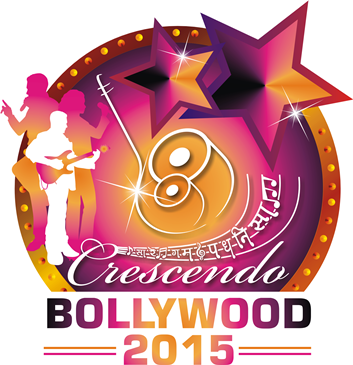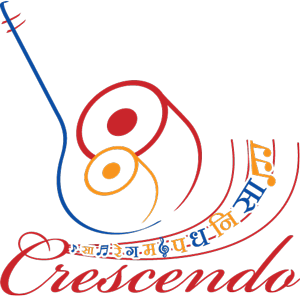The Bhendi Bazaar Gharana Gayaki - by Anuradha Kuber
The Bhendi Bazar Gharana has a history of over 150 years. It was established around 1870 by the three brothers, Chajju Khan, Nazir Khan and Khadim Hussain Khan who had come to settle in Mumbai from Muradabad in Uttar Pradesh. They had trained under their father, Ustad Dilawar Hussain Khan. In order to expand the field of their knowledge, they took training in Dhrupad from Ustad Inayat Khan of the Dagar Parampara. They settled in a then prosperous area of Mumbai  called Bhendi Bazar ( It was located behind the Fort area of Mumbai and was called 'Behind the Bazar' which later became Bhendi Bazar).
There they formed their own singing style which came to be widely appreciated and acclaimed. They were called 'Bhendi Bazarwalle' and the Gharana or Gayaki became the Bhendi Bazar Gharana. This Gharana has many an illustrious name to its credit. AnjaniBai Malpekar, Ustad Aman Ali Khan, Pt Shivkumar Shukla, Pt T. D. Janorikar to name but a few. This Gharana has flourished and enriched our music over time with its unique features and specialties alongside the other well-known Gharanas of Khayal music.
†
THE GAYAKI : Every Gharana, big or small; has its own set of musical idiom and its own methods of approaching the two main aspects; Swar and Lay (notes and rhythm) on which our music is based. That is the reason why the same Raag sounds different when sung in different Gharanas. No music can be created by eliminating any one of these factors. Vocal music has in addition to these two factors, a third dimension; that of language. These dimensions are explored in various ways and later on combined to form a specific music style identifiable with that particular Gharana.
†
THE VOICE : The stalwarts of different Gharanas have experimented with various vocal textures. The one most closely suited to the Gharana Gayaki became the predominant texture and the pupils voices were moulded accordingly. Sometimes the voice texture of the Pioneer of a particular music style has defined the style of music he propagates.
In Bhendi Bazar Gayaki the students are encouraged to sing in a natural voice. No acquired textural variations are imposed on it. Emphasis is laid on a natural, resonant and 'Aakar-yukta' voice with an easy reach in the 3 octaves. Omkar Sadhana and Kharja Sadhana are very effective in making the voice resonant and are an integral part of Riyaz in this Gharana as also in all other Gharanas.
This Gayaki was originally influenced by the music produced on the Been or Veena. It could be called the vocal representation of that music. Use of Meend (Glide), grace notes, volume variations are some of the important features of this Gayaki. A good lung capacity is needed at the outset in order to produce volume variations and Meend effectively.
Vowel sounds are used very effectively in this Gayaki. Not only 'Aa' but other vowel sounds taken from the words of the Bandish are used during Raag elaboration. The Bhendi Bazar musicians have as their base a very highly developed sense of tunefulness which augments the overall musicality (Naadmayata) of the presentation.
†
KHANDMER OR MERKHAND : Another feature synonymous with the Bhendi Bazar Gharana is Khandmer or Merkhand, a musical principle derived from the mathematical concept of permutation and combination. 2, 3, 4, 5 etc. notes are combined in such a way that no note is repeated in a combination.
So with two notes, S and R, only 2 combinations are possible without repetition SR and RS.
With three notes S R G, a total of 6 combinations are possible - SRG | SGR | RSG | RGS | GSR | GRS
With four notes S R G M, we get 24 combinations. SRGM | SRMG | S G R M| S G M R|S M R G| S M G R| R S G M| R S M G| R G S M|R G M S|R M S G| R M G S | G S R M| G S M R| G R S M| G R M S|G M S R| G M R S| M S R G| M S G R|M R S G| M R G S | M G S R| and M G R S.
So on and so forth with five, six, seven etc notes.
With 7 notes a total of 5040 combinations are possible without repetition. An infinite number of patterns is possible if notes are used in combination of Shudha and Vikrit (i.e. Komal - flat & Teevra - sharp), if some notes are omitted, or repeated.
When a Raag is improvised by applying the principles of Khandmer, keeping in mind all the rules of that Raag, its spectrum becomes very wide as numerous possibilities open up within the framework of the Raag.
In Bhendi Bazaar Gharana specific Riyaz of Khandmer and its aesthetic application is taught. The Alaap, Sargam, and Taan sung with these Khandmers using Soot, Meend and Gamak, make an aesthetically rich performance. Khandmer generates infinite creative possibilities which help in avoiding repetitions while elaborating a Raag. Khandmer is not the prerogative of this Gharana alone. Every musician uses it while elaborating. But Bhendi Bazar Gharana has used Khandmer more effectively than any other Gharana.
†
LAY : Our entire music is based on the two underlying principles of Swar and Laya. Gharana Gayakis differ because they explore these two factors in different ways, to varying degrees and by different methods.  Combination of their different facets makes each Gayaki unique. Bhendi Bazar Gharana has both Vilambit and Madhya Lay Gayaki. Anjani Bai Malpekar was trained in the Vilambit Lay Gayaki which had Meend and Gamak from the Been Ang. Whereas Ustad Aman Ali Khansaheb, who had a naturally thin voice, developed a Madhya Lay Gayaki which had a dancelike  gait. It was Pt T D Janorikar who amalgamated these two singing styles as he was the only person fortunate enough to have received training from both these stalwart musicians.
The Lay in Bhendi Bazar Gharana is subtle and covert. It is not aggressive, nor is it constantly at the forefront. But its presence is felt right from the Sam (first Beat) of the Bandish. The continuity in Swara-s is complimented beautifully by the unbroken Lay thread. The Lay is so well assimilated within the music that Swar and Lay become one harmonious whole. This can be called Aantarik Laya or intrinsic Lay.
The phrases taken while improvisation keep a constant relation with the Taal, its Khanda-s, Matra-s and subdivisions of the Matra-s. Volume variation and grace notes also help to maintain this constant relation. Taal-s like Jhaptaal (10 beat cycle), Roopak (7 beat cycle), Ektaal (12 beat cycle), Trital (16 beat cycle) are used. A specialty is the Madhya Lay Ektaal with a unique tempo which Aman Ali Khansahib used to design his Gayaki.
Even in the Madhya-Drut and Drut compositions this relation is maintained with the Lay, which remains as a canvas on which the Raag picture is painted.
†
SARGAM : Bhendi Bazar Gharana is known for its Sargam (Solfa singing) which has its origins in the Carnatic music system. Khansaheb was influenced greatly by Carnatic music and studied it keenly. He adapted the Sargam patterns used in Carnatic style and molded it to suite his Gayaki and made it a distinguishing feature of Bhendi Bazaar Gharana.
Sargam has a definite role to play in the Raag improvisation, it should say something which has not already been said in the Alap-s or would be said later on in the Taan-s. If translated in Aakar, it should not sound like either. The Kahan or musical pronunciation is developed in such a way that Sargam stands out as a separate untranslatable entity.
This Sargam uses Khandmer, voice modulation like Banda Bol (closed or subtle pronunciation of vowels), Khulaa Bol (open or loud pronunciation of vowels), grace notes, Meend, pauses and far and near note distances. Resonant voice production and sometimes prosaic pronunciation of the Sargam give it a unique flavor. With all this, the Sargam is woven into the Beats of the Taal and the vocalist comes effortlessly and gracefully to the Sam. This Amad (arrival) is very attractive and carries the audience with it.
†
TAAN : Apart from the usual speedy Taan-s, Matthi Taan is a specialty of Bhendi Bazaar Gharana. It is a distinctive Taan form; slower than the usual Taan-s with a combination of various patterns interspersed with pauses. These designs are obtained from Khandmer. Bal or force is given on some notes. A sense of the unexpected is created by joining notes and note designs of varying distances with Gamak. The patterns are entwined together and are also separated with pauses. These Taan-s give the overall presentation a great musical depth.
†
RAAG : Apart from the usual repertoire of Raags in Hindustani music, Bhendi Bazar Gharana has some lesser known or Anvat Raags to its credit like Triveni, Zilaf, Shringeri, Sanjh, Motaki, etc. Also from his study of Carnatic music Khansaheb adapted some of the Carnatic Raags into Hindustani music. He composed beautiful Bandishes in Raag-s like Hamsadhwani, Pratapvarali, Naagswaravali etc.
†
THE BANDISHES OF AMAN ALI KHAN : The greatest asset of this Gharana is the wealth of Bandishes Aman Ali Khansaheb composed. The original Bandishes sung by the trio Chajju Khan, Khadim Hussain Khan and Nazir Khan are not available to us. But Khansaheb's Bandishes are proof enough of what his predecessors might have composed. Khansaheb and later his successors composed under the Mudra (nom de plume) 'Amar'. His compositions have immense musical, literary and aesthetic value. The subject matter ranges widely from nature, beauty, philosophy, musical grammar and various deities. Each Bandish is distinct and brings out the Raag to perfection, many a time bringing out an unexpected aesthetic facet of that Raag. The compositions are linguistically rich; influenced greatly by Sanskrit and the Braj Bhasha (a dialect of Hindi).
†
The Bhendi Bazar Gayaki is a highly cultivated and rich musical tradition. It is not as well known as some other Gharanas, but it has survived the test of time and has flourished over the years.



